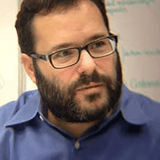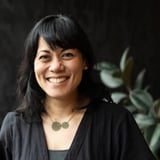Summary
Amahra Spence will speak on the themes of the conference, reflect back key insights that emerged over the course of the three days, and leave us with critical questions we can carry forward as a community, and individuals after the conference is over.
Key Insights
-
•
Liberation transcends equity and justice by simultaneously addressing past harms, present fairness, and future outcomes.
-
•
Civic design can be seen as rehearsing freedom through collective imagination and science fiction principles.
-
•
The personal and spatial histories, like Amara’s grandfather’s home, offer vital design precedents rooted in radical imagination and communal learning.
-
•
Artistic practices are critical tools for world-building, making abstract ideas tangible in liberation work.
-
•
Mutual aid should be the default community practice, not just crisis response, embedding generosity structurally.
-
•
Redefining hospitality through artist-led, locally owned models disrupts extractive financial systems and promotes spiritual sustainability.
-
•
Organizational governance benefits from dynamic, non-hierarchical solar system models centered on mission rather than individuals.
-
•
Young people hold embodied wisdom and agency that must be prioritized as present contributors, not deferred futures.
-
•
Decentralizing resources includes meeting spiritual, social, and access needs, not merely financial redistribution.
-
•
Designing for generative endings is essential to regenerative change, avoiding hoarding power or unsustainable leadership models.
Notable Quotes
"Liberation is the only thing that not only repairs for past Injustice but removes barriers to progress and affirmatively influences future outcomes."
"All organizing is science fiction—in the way we imagine futures that don’t yet exist."
"Imagination gives us borders, superiority, races, indicators of ability; I often feel trapped inside someone else’s imagination."
"Radical means grasping things at the root, not just surface layer intentions or interventions."
"Mutual Aid has to be an intentional act, the default way that we function as a community."
"Can we start to build and give form to liberation? What would that look like as a design practice?"
"Flat or hierarchical organizational structures don’t work; we designed a solar system where the mission is at the sun."
"If our mission is no longer serving, we need to design for the most generative ending possible."
"We build what we believe – expanding imagination is critical to breaking from old precedents."
"The only lasting truth is change; what if we set that as our design intention and boldly stepped into it?"
Or choose a question:














More Videos

"I wish I could tell my 22-year-old self what to stop doing and what to embrace to be a better designer."
Adam Cutler Karen Pascoe Ian Swinson Susan WorthmanDiscussion
June 8, 2016

"Sometimes the director is the most senior design person in the org and ends up playing the executive role without the title or support."
Peter MerholzThe Trials and Tribulations of Directors of UX (Videoconference)
July 13, 2023

"Everything that has been put online, someone like us made and put there; we bake our own biases into it."
Lisa WelchmanCleaning Up Our Mess: Digital Governance for Designers
June 14, 2018

"Green spaces in cities can greatly enhance our quality of life and resilience."
Vincent BrathwaiteOpener: Past, Present, and Future—Closing the Racial Divide in Design Teams
October 22, 2020

"Psychological safety was far and away the key ingredient for teams being effective."
Brenna FallonLearning Over Outcomes
October 24, 2019

"We are all experiencing a spatial collapse, a disruption of our mental models of how we navigate physical and virtual spaces."
Tricia WangSpatial Collapse: Designing for Emergent Culture
January 8, 2024

"We aimed for research that is actionable, not just insightful or pretty to look at."
Edgar Anzaldua MorenoUsing Research to Determine Unique Value Proposition
March 11, 2021
"We manage the environment in which knowledge distribution takes place, not the process itself."
Designing Systems at Scale
November 7, 2018

"Decades worth of agricultural data had to be thrown out because they lacked control groups and statistical rigor."
Erin WeigelGet Your Whole Team Testing to Design for Impact
July 24, 2024
















